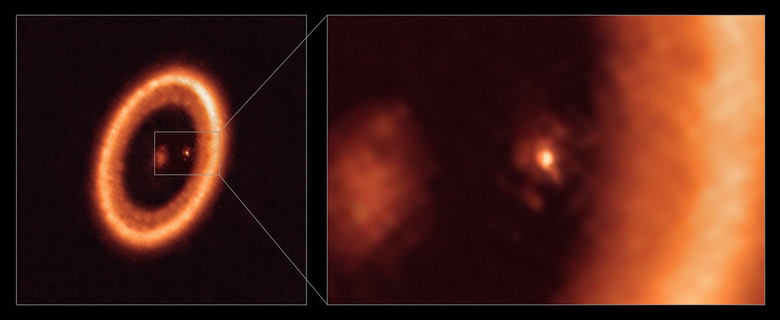Astronomers Discover A Moon-Forming Disk Around An Exoplanet
Astronomers have used data gathered by the Atacama Large Millimeter/submillimeter Array (ALMA) to confirm the detection of a disk around a planet outside of our solar system for the first time. The team believes the observations will shine new light on how moons and planets form in young solar systems. Researcher Myriam Benisty says the team's work presents a clear detection of a disk where satellites could be forming.
Benisty also notes that the observations gathered using ALMA are at such "exquisite resolution" that they could clearly identify the disk associated with the planet and constrain its size for the first time. The disk is called a circumplanetary disk and surrounds exoplanet PDS 70C. That planet is one of two giant Jupiter-like planets orbiting a star 400 light-years away.
Previously, astronomers had hints that a moon-forming disc surrounded the exoplanet, but they were unable to tell the disc apart from the surrounding environment. Using ALMA, the researchers found the disc has about the same diameter as the distance from the sun to the Earth and enough mass to form up to three satellites the size of the moon.
In addition to being important to learn about how moons are formed, the new observations are also important for proving theories on planet formation that couldn't be tested until now. Planets form in disks of dust surrounding young stars that carve out cavities as they consume material from the circumstellar disk. Sometimes, a planet can acquire its own circumplanetary disc contributing to the planet's growth and potentially coming together to form satellites.

While the observations have added more data, astronomers don't yet understand the details of these processes. It's still unclear when, where, and how planets and moons form. The system gives researchers a unique opportunity to observe and study the process of planet and satellite formation.
